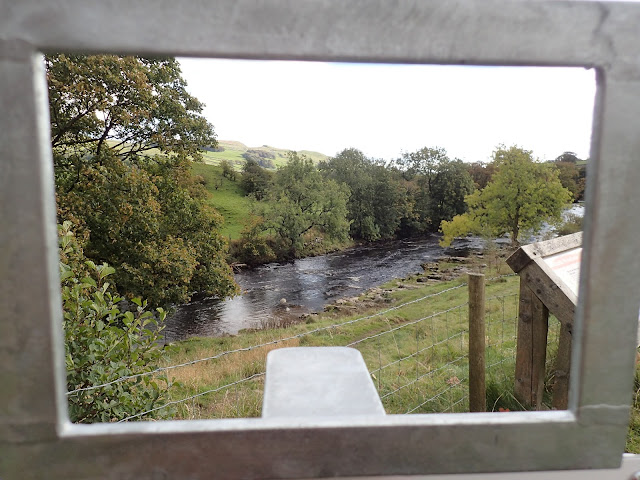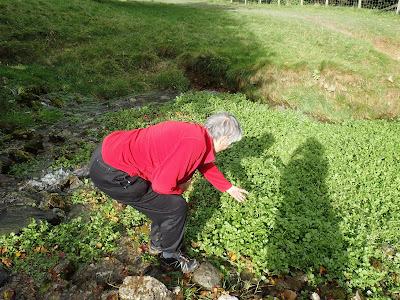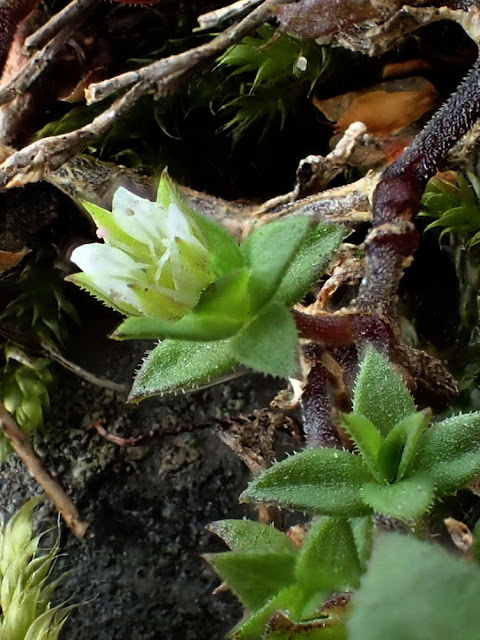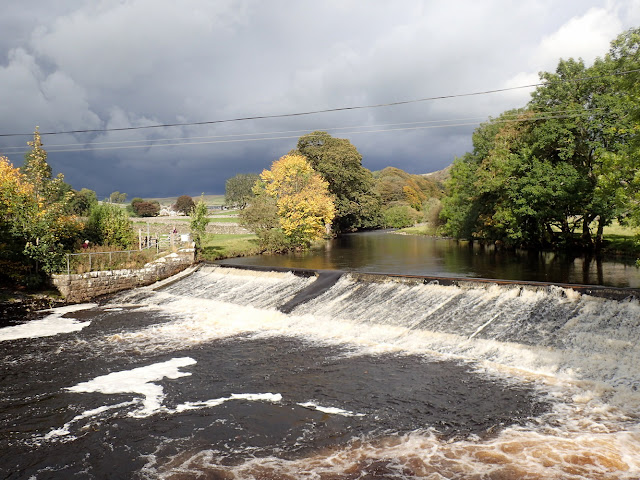
to Stainforth Packhorse Bridge and down via the Hoffman Kiln back to Langcliffe .. stopping at Knight Stainforth for tea and scones. Very civilised.
Maybe this post should come under "White" - but I suspect that my next white posts will be at least a week away. so I'll get it in whilst the plants are fresh.
1. Prickly Oxtongue - Picris echioides -
This is amazing I thought. How did it get here? It is a south eastern plant. Did they put rubbish on the bank and it has come in with the rubbish.
I was delighted to find Prickly Oxtongue in VC65 near Borough Bridge last month - as a cornfield weed.-- But here? in Upper Ribblesdale.
Two metres further we found Viper's Bugloss - Echium vulgare. I began to get suspicious.
Above us was Teasel. Beyond me was some Greater Burnet, but looking a little more toothed than the local Greater Burnet that we get around here (or in the Derwent Valley).
Then we came across amazingly tall Wild Carrot plants with beautiful fruit.
All was revealed when we met Becky Allen at the far end of the slope, carrying out a gardening job for the Knights Stainforth Park ang strimming the vegetation .. to with an inch or so of the ground. Yes they had planted wildflower seeds on the slope earlier in the year. The people who live at the park and who visit loved the flowers she said.
She was happy to talk and hoped to sew more seeds on the slope later -
I left a little bemused. Glad that people appreciated the flowers. I wished people would also appreciate the native flowers more. . There are some really good wildflowers botanically speaking along the river bank of the Camp site.. In the pasture fields and caravan fields there is very little except grass now due to fertilizers and grazing. Higher up on the thin soil of the hills on cliffs there is more interesting vegetation.
"Planting non local wild plants is probably better than planting wildflowers of "foreign genetic stock" that might then hybridise with local plants." I thought.
I had certainly enjoyed seeing the plants
Near start of walk.
We'd had a lovely walk!!
Click here for more Settle Lockdown Wildflower Walks
Maybe this post should come under "White" - but I suspect that my next white posts will be at least a week away. so I'll get it in whilst the plants are fresh.
1. Prickly Oxtongue - Picris echioides -

This is amazing I thought. How did it get here? It is a south eastern plant. Did they put rubbish on the bank and it has come in with the rubbish.
I was delighted to find Prickly Oxtongue in VC65 near Borough Bridge last month - as a cornfield weed.-- But here? in Upper Ribblesdale.
Two metres further we found Viper's Bugloss - Echium vulgare. I began to get suspicious.
Above us was Teasel. Beyond me was some Greater Burnet, but looking a little more toothed than the local Greater Burnet that we get around here (or in the Derwent Valley).
There was also some very vigorous Broad-leaved Dock. Though that looked very native!
All was revealed when we met Becky Allen at the far end of the slope, carrying out a gardening job for the Knights Stainforth Park ang strimming the vegetation .. to with an inch or so of the ground. Yes they had planted wildflower seeds on the slope earlier in the year. The people who live at the park and who visit loved the flowers she said.
She was happy to talk and hoped to sew more seeds on the slope later -
I left a little bemused. Glad that people appreciated the flowers. I wished people would also appreciate the native flowers more. . There are some really good wildflowers botanically speaking along the river bank of the Camp site.. In the pasture fields and caravan fields there is very little except grass now due to fertilizers and grazing. Higher up on the thin soil of the hills on cliffs there is more interesting vegetation.
"Planting non local wild plants is probably better than planting wildflowers of "foreign genetic stock" that might then hybridise with local plants." I thought.
I had certainly enjoyed seeing the plants
And the scone and view at the cafe at Knight Stainforth
(sorry scone half eaten here)
On the walk round there were two genuinely wild white flowers to add to my list:-
Watercress in a stream / flush entering the river 1/4 mile south of the Foss and Campsite
 |
| Watercress- still have to check if it is One-rowed Watercress or Two-rowed Watercress. |
Right at the beginning of our walk in the cobbles around the fountain at Langcliffe was Thyme-leaved Sandwort. This is not rare - it grows in dry stony places and footpaths - just it is the first time this year I have a found it in flower. It is tiny.
Near start of walk.
Click here for more Settle Lockdown Wildflower Walks


















No comments:
Post a Comment